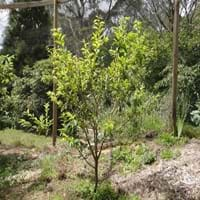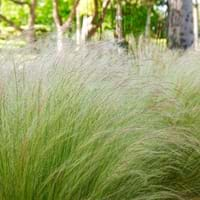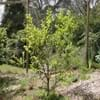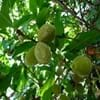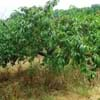Life Span
Biennial
Perennial
Origin
Hybrid origin
Southwestern United States, Texas, Mexico
Types
Flavorosa, Amigo, Eagle Egg
Not Available
Number of Varieties
Not Available
Habitat
Wet lands
driveways, open Woodlands, Roadsides, Rocky areas, Slopes, tree wells
USDA Hardiness Zone
6-9
6-10
AHS Heat Zone
10-1
11 - 4
Sunset Zone
2a, 2b, 3a, 3b, 4, 5, 6, 7, 8, 9, 10, 11, 12, 14, 15, 16, 17, 18, 19, 20
2b, 3a, 3b, 4, 5, 6, 7, 8, 9, 10, 11, 12, 13, 14, 15, 16, 17, 18, 19, 20, 21, 22, 23, 24
Habit
Upright/Erect
Clump-Forming
Flower Color
Not Available
Not Available
Flower Color Modifier
Bicolor
Bicolor
Fruit Color
Green, Orange Red, Red, Yellow green
Non Fruiting Plant
Leaf Color in Spring
Several shades of Green
Green, Light Green
Leaf Color in Summer
Not Available
Light Green
Leaf Color in Fall
Not Available
Green, Yellow green, Tan
Leaf Color in Winter
Light Green
Green, Yellow green, Gold, Tan
Leaf Shape
Palmately Lobed
Linear
Plant Season
Winter
Spring, Summer, Fall, Winter
Sunlight
Full Sun
Full Sun, Partial Sun
Growth Rate
Medium
Medium
Type of Soil
Clay, Loam, Sand
Clay, Loam, Sand
The pH of Soil
Acidic, Neutral, Alkaline
Acidic, Neutral, Alkaline
Soil Drainage
Well drained
Well drained
Bloom Time
Spring
Early Summer, Summer
Tolerances
Drought
Drought
Where to Plant?
Ground
Ground
How to Plant?
Transplanting
Seedlings
Plant Maintenance
Medium
Medium
Watering Requirements
Average Water Needs, Medium, Requires watering in the growing season, Water daily during growing season, Water Deeply
Do not water excessively
In Summer
Lots of watering
Lots of watering
In Spring
Moderate
Moderate
In Winter
Average Water
Average Water
Soil pH
Acidic, Neutral, Alkaline
Acidic, Neutral, Alkaline
Soil Type
Clay, Loam, Sand
Clay, Loam, Sand
Soil Drainage Capacity
Well drained
Well drained
Sun Exposure
Full Sun, Partial Sun
Full Sun, Partial Sun
Pruning
Remove damaged leaves, Remove dead branches, Remove dead leaves
Requires little pruning
Fertilizers
All-Purpose Liquid Fertilizer, Apply 10-10-10 amount
Apply 12-6-6 fertilizer
Pests and Diseases
Red blotch
Not Available, Red blotch
Plant Tolerance
Drought
Drought
Flower Petal Number
Not Available
Single
Foliage Texture
Not Available
Fine
Foliage Sheen
Not Available
Matte
Attracts
Bees, Butterflies
Not Available
Allergy
Itchiness, Rash, Swelling
Not Available
Aesthetic Uses
Not Used For Aesthetic Purpose
Landscape Designing, Showy Purposes, small hedge
Beauty Benefits
Not Available
Not Available
Edible Uses
Insignificant
No
Environmental Uses
Air purification
Air purification
Medicinal Uses
Immunity
No Medicinal Use
Part of Plant Used
Fruits
Leaves
Other Uses
Jam, Jelly, Used As Food, Used in salads
Used as Ornamental plant
Used As Indoor Plant
No
No
Used As Outdoor Plant
Yes
Yes
Garden Design
Fruit / Fruit Tree
Dried Flower / Everlasting, Container, Foundation, Mixed Border, Rock Garden / Wall
Botanical Name
PRUNUS 'Spring Satin'
NASSELLA tenuissima
Common Name
Plumcot, Spring Satin Plumcot
Finestem Needlegrass, Mexican Feather Grass
In Hindi
Plumcot
Mexican Feather Grass
In German
Plumcot
Mexikanische Federgras
In French
plumcot
Mexicaine Herbe Feather
In Spanish
plumcot
Pluma hierba mexicana
In Greek
Plumcot
Μεξικού Αστραπή Grass
In Portuguese
plumcot
Mexican Pena Relva
In Polish
Plumcot
Mexican Feather trawy
In Latin
Plumcot
Mexicanus Pluma Grass
Phylum
Vascular plant
Magnoliophyta
Class
Magnoliopsida
Liliopsida
Clade
Angiosperms, Eudicots, Rosids
Angiosperms, Commelinids, Monocots
Tribe
Not Available
Stipeae
Subfamily
Not Available
Not Available
Season and Care of Plumcot and Mexican Feather Grass
Season and care of Plumcot and Mexican Feather Grass is important to know. While considering everything about Plumcot and Mexican Feather Grass Care, growing season is an essential factor. Plumcot season is Winter and Mexican Feather Grass season is Winter. The type of soil for Plumcot is Clay, Loam, Sand and for Mexican Feather Grass is Clay, Loam, Sand while the PH of soil for Plumcot is Acidic, Neutral, Alkaline and for Mexican Feather Grass is Acidic, Neutral, Alkaline.
Plumcot and Mexican Feather Grass Physical Information
Plumcot and Mexican Feather Grass physical information is very important for comparison. Plumcot height is 460.00 cm and width 370.00 cm whereas Mexican Feather Grass height is 50.80 cm and width 55.90 cm. The color specification of Plumcot and Mexican Feather Grass are as follows:
Plumcot flower color: Not Available
Plumcot leaf color: Several shades of Green
Mexican Feather Grass flower color: Not Available
- Mexican Feather Grass leaf color: Green and Light Green
Care of Plumcot and Mexican Feather Grass
Care of Plumcot and Mexican Feather Grass include pruning, fertilizers, watering etc. Plumcot pruning is done Remove damaged leaves, Remove dead branches and Remove dead leaves and Mexican Feather Grass pruning is done Requires little pruning. In summer Plumcot needs Lots of watering and in winter, it needs Average Water. Whereas, in summer Mexican Feather Grass needs Lots of watering and in winter, it needs Average Water.
